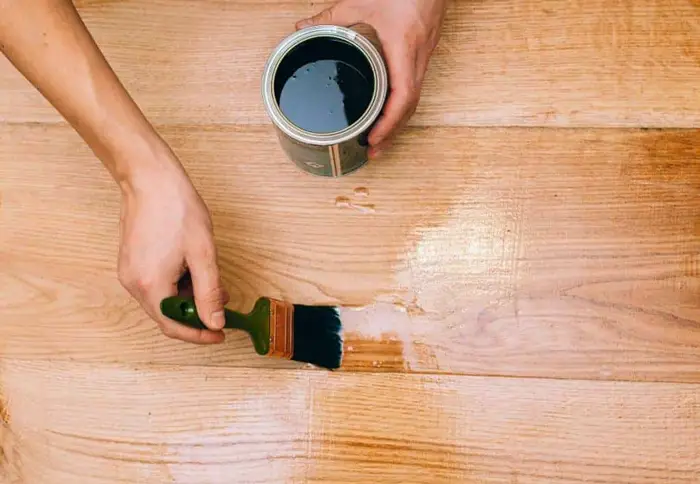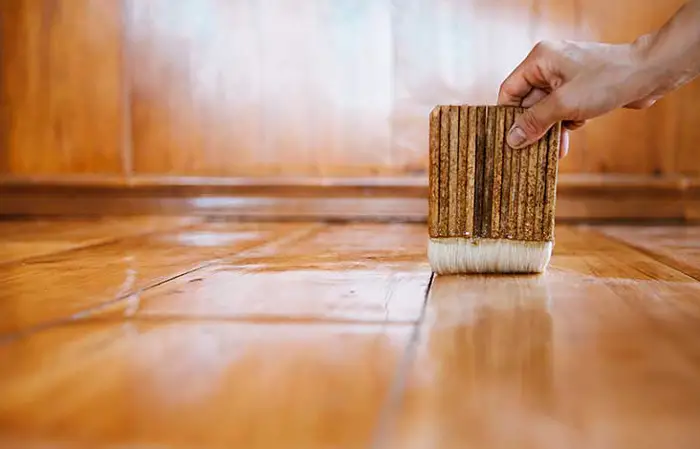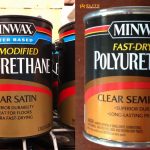Can You Put Water-Based Polyurethane Over Oil-Based Polyurethane?
Both water-based and oil-based polyurethanes carry out a similar task of protecting your wood surface from wearing out and moisture.
But can you put water–based Polyurethane over oil-based Polyurethane? Absolutely. You can use water polyurethane over an oil-based poly as long as the oil-based poly has completely dried. Applying water polyurethane to a stain that has not dried can rub off or even cause damage to the stain. Fixing this requires you to off-sand everything and start afresh.
Below, we are going to dive into more details about whether you should put water-based poly over oil-based poly. We will also discuss on how to do it, and the benefits of using water-based poly over oil-based stain.
Can You Put Water-Based Polyurethane Over Oil-Based Polyurethane?
The short answer is Yes. You can put water–based poly, provided the oil–based stain has completely dried. Any of these polyurethanes can be applied over the other as they both carry out the same job.

However, keep in mind that many woodworkers stick to water-based poly over oil-based poly to enable them to come up with a beautiful wood surface.
How To Put Water-Based Polyurethane on Oil-Based Polyurethane?
There are different tools you need by your side to ensure a successful water-based poly over oil-based poly application.

These include:
- Tack cloth
- Water based polyurethane
- 120-Grit sandpaper
- Dust mask
- Paintbrush
- 400-Grit sandpaper
- A foam or bristle brush
- Oil-based Polyurethane
Here are the steps to follow when applying water–based Polyurethane to oil-based Polyurethane:
Step 1: Start by sanding and cleaning the wooden surface
Using 120–grit sandpaper, sand the surface area you want to stain thoroughly and make sure no cracks will affect the appearance of your surface.
To get good and pleasing results, you should always sand your surface in the direction of the wood. Also, ensure you have cleaned the wood thoroughly after sanding it.
Step 2: Put the oil-based poly
Apply your oil-based poly using a synthetic or foam brush. Put the oil-based poly from the direction of the wood grain for the stain to be properly absorbed by the wood.
After about twenty to thirty minutes, take a tack cloth and use it to remove excess poly. Give every stain around two hours before applying another coat.
Step 3: Sanding off the coat stains
This is the most important step. It ensures your water–based poly gets to the stained wood with no cases of separating layers that are not wanted.
After each coat has dried well, you can now sand off the coat stains using 400-grit sandpaper and use it to the wood grain’s side. It is important to ensure you have cleaned the surface after sanding off.
Step 4: Put The water-based polyurethane
At this point, you can now apply your water-based poly using a clean paintbrush. Make sure to apply in the wood grain direction and make the coats thin to have the best results.
You can also use some pressure as it stops the surface from cracking and streaking. It is also advisable not to brush the surface much because it can change the final appearance of the surface.
Step 5: Sanding off the polyurethane coat
It is important to give your coat constant time to dry properly before starting to sand it off. Fortunately, water polyurethane only takes a little time to dry compared to oil-based polyurethane.
After it has well dried, you can now use 400-grit sandpaper and sand smoothly to the wood grain direction. You can keep on applying water-based poly more than once until you are satisfied with the results.
Advantages Of Applying Water–Based Polyurethane over Oil-Based Poly:

- Water-based poly dries quickly: Water-based polyurethane cures and dries faster while oil-based takes a lot of time to dry. This means you can use several coats of water-based poly in a day.
- Water poly does not change with duration: The polyurethane also stays clear all the time maintaining the natural appearance of the wood surface compared with oil-based poly, which changes to a dull color with time.
- It has less odor: the polyurethane releases less odor and you can safely stay in the house during the ongoing polyurethane application.
- Water-based polyurethane has a rough texture: The poly has a rough texture, which many buyers prefer because it does not comprise oil lubricant in comparison with oil-based which has a smooth texture.
How Long Should You Wait Before Applying Water-Based Poly Over Oil-Based Polyurethane Dry?
You should wait for about three days for the oil-based poly to cure and completely dry. After that, you can put your water-based polyurethane on the stained surface.
Waiting for the oil-based polyurethane to cure properly before adding the water-based polyurethane is crucial in ensuring you get the best results.

Frequently Asked Questions (FAQs):
Here are some additional commonly asked questions regarding applying a water-based polyurethane over an oil-based poly:
1. Can water-based polyurethane change the stained wood color?
Oil-based polyurethane barely changes the appearance of the stained wood but for the water-based polyurethane, no changes of color on the stained wood at all. You only have to apply it properly.
2. Is water–based poly better than oil polyurethane?
Water-based poly is the best to opt for because it has a hard coating and dries up very fast. Therefore, it is advisable to use water-based poly if you want to accomplish your project sooner.
3. Can you mix water–based poly with oil–based poly?
Although water-based poly can be put on oil-based polyurethane, the two are immiscible products and therefore they cannot mix properly. You can only mix an oil-based poly to the oil stain. A water-based poly can only be mixed with a water-based stain.
Conclusion
Using water-based polyurethane on oil polyurethane is perfectly okay. The process is also straightforward and it makes your final finishes appear clear and superior.
However, we advise you to give the oil poly coat time to cure properly. You should also clean it thoroughly before adding the water-based polyurethane on top of it.
Failing to give your polyurethane constant time to dry can cause it to not stick well. It can then start to rub off, exposing the wood and stains to moisture and wear.




